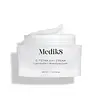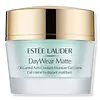What's inside
What's inside
 Key Ingredients
Key Ingredients

 Benefits
Benefits

 Concerns
Concerns

 Ingredients Side-by-side
Ingredients Side-by-side

Water
Skin ConditioningHeptyl Undecylenate
EmollientCaprylic/Capric Triglyceride
MaskingTetrahexyldecyl Ascorbate
AntioxidantMethylpropanediol
SolventCetearyl Olivate
Cetearyl Isononanoate
EmollientDistarch Phosphate
AbsorbentTocopheryl Acetate
AntioxidantSodium Polyacrylate
AbsorbentSorbitan Olivate
EmulsifyingSodium Hyaluronate
HumectantCaprylyl Glycol
EmollientGlycerin
HumectantDisodium EDTA
Phenylpropanol
MaskingCitrus Grandis Peel Oil
MaskingCitrus Limon Peel Oil
MaskingCitrus Aurantium Bergamia Fruit Oil
MaskingPelargonium Graveolens Flower Oil
MaskingSodium Hydroxide
BufferingLimonene
PerfumingCitronellol
PerfumingLinalool
PerfumingGeraniol
PerfumingCitral
PerfumingWater, Heptyl Undecylenate, Caprylic/Capric Triglyceride, Tetrahexyldecyl Ascorbate, Methylpropanediol, Cetearyl Olivate, Cetearyl Isononanoate, Distarch Phosphate, Tocopheryl Acetate, Sodium Polyacrylate, Sorbitan Olivate, Sodium Hyaluronate, Caprylyl Glycol, Glycerin, Disodium EDTA, Phenylpropanol, Citrus Grandis Peel Oil, Citrus Limon Peel Oil, Citrus Aurantium Bergamia Fruit Oil, Pelargonium Graveolens Flower Oil, Sodium Hydroxide, Limonene, Citronellol, Linalool, Geraniol, Citral
Water
Skin ConditioningIsododecane
EmollientButylene Glycol
HumectantPolypropylene
Dimethicone
EmollientBis-PEG-18 Methyl Ether Dimethyl Silane
EmollientGlycerin
HumectantSilica
AbrasiveTetrahexyldecyl Ascorbate
AntioxidantTocopheryl Acetate
AntioxidantThermus Thermophillus Ferment
Skin ConditioningErgothioneine
AntioxidantEthylbisiminomethylguaiacol Manganese Chloride
AntioxidantAmmonium Acryloyldimethyltaurate/Vp Copolymer
Pyrus Malus Fruit Extract
Skin ConditioningLens Esculenta Fruit Extract
Skin ConditioningCitrullus Lanatus Fruit Extract
Skin ConditioningLaminaria Saccharina Extract
Skin ProtectingNarcissus Tazetta Bulb Extract
AstringentCucumis Sativus Fruit Extract
EmollientTrehalose
HumectantAlgae Extract
EmollientLactobacillus Ferment
Skin ConditioningCaffeine
Skin ConditioningAcetyl Glucosamine
Skin ConditioningHordeum Vulgare Extract
EmollientPolysilicone-11
Acrylates/C10-30 Alkyl Acrylate Crosspolymer
Emulsion StabilisingPropylene Glycol Dicaprate
EmollientHelianthus Annuus Seedcake
AbrasiveSodium Lactate
BufferingSodium Hyaluronate
HumectantLecithin
EmollientLaureth-23
CleansingTromethamine
BufferingCitric Acid
BufferingCyclodextrin
AbsorbentCaprylyl Glycol
EmollientLaureth-4
EmulsifyingOleth-10
EmulsifyingSodium PCA
HumectantParfum
MaskingHexylene Glycol
EmulsifyingDisodium EDTA
BHT
AntioxidantSodium Benzoate
MaskingPotassium Sorbate
PreservativePhenoxyethanol
PreservativeLinalool
PerfumingBenzyl Salicylate
PerfumingCI 42090
Cosmetic ColorantWater, Isododecane, Butylene Glycol, Polypropylene, Dimethicone, Bis-PEG-18 Methyl Ether Dimethyl Silane, Glycerin, Silica, Tetrahexyldecyl Ascorbate, Tocopheryl Acetate, Thermus Thermophillus Ferment, Ergothioneine, Ethylbisiminomethylguaiacol Manganese Chloride, Ammonium Acryloyldimethyltaurate/Vp Copolymer, Pyrus Malus Fruit Extract, Lens Esculenta Fruit Extract, Citrullus Lanatus Fruit Extract, Laminaria Saccharina Extract, Narcissus Tazetta Bulb Extract, Cucumis Sativus Fruit Extract, Trehalose, Algae Extract, Lactobacillus Ferment, Caffeine, Acetyl Glucosamine, Hordeum Vulgare Extract, Polysilicone-11, Acrylates/C10-30 Alkyl Acrylate Crosspolymer, Propylene Glycol Dicaprate, Helianthus Annuus Seedcake, Sodium Lactate, Sodium Hyaluronate, Lecithin, Laureth-23, Tromethamine, Citric Acid, Cyclodextrin, Caprylyl Glycol, Laureth-4, Oleth-10, Sodium PCA, Parfum, Hexylene Glycol, Disodium EDTA, BHT, Sodium Benzoate, Potassium Sorbate, Phenoxyethanol, Linalool, Benzyl Salicylate, CI 42090
Ingredients Explained
These ingredients are found in both products.
Ingredients higher up in an ingredient list are typically present in a larger amount.
Caprylyl Glycol is a humectant and emollient, meaning it attracts and preserves moisture.
It is a common ingredient in many products, especially those designed to hydrate skin. The primary benefits are retaining moisture, skin softening, and promoting a healthy skin barrier.
Though Caprylyl Glycol is an alcohol derived from fatty acids, it is not the kind that can dry out skin.
This ingredient is also used as a preservative to extend the life of products. It has slight antimicrobial properties.
Learn more about Caprylyl GlycolDisodium EDTA plays a role in making products more stable by aiding other preservatives.
It is a chelating agent, meaning it neutralizes metal ions that may be found in a product.
Disodium EDTA is a salt of edetic acid and is found to be safe in cosmetic ingredients.
Learn more about Disodium EDTAGlycerin is already naturally found in your skin. It helps moisturize and protect your skin.
A study from 2016 found glycerin to be more effective as a humectant than AHAs and hyaluronic acid.
As a humectant, it helps the skin stay hydrated by pulling moisture to your skin. The low molecular weight of glycerin allows it to pull moisture into the deeper layers of your skin.
Hydrated skin improves your skin barrier; Your skin barrier helps protect against irritants and bacteria.
Glycerin has also been found to have antimicrobial and antiviral properties. Due to these properties, glycerin is often used in wound and burn treatments.
In cosmetics, glycerin is usually derived from plants such as soybean or palm. However, it can also be sourced from animals, such as tallow or animal fat.
This ingredient is organic, colorless, odorless, and non-toxic.
Glycerin is the name for this ingredient in American English. British English uses Glycerol/Glycerine.
Learn more about GlycerinLinalool is a fragrance and helps add scent to products. It's derived from common plants such as cinnamon, mint, citrus, and lavender.
Like Limonene, this ingredient oxidizes when exposed to air. Oxidized linalool can cause allergies and skin sensitivity.
This ingredient has a scent that is floral, spicy tropical, and citrus-like.
Learn more about LinaloolSodium Hyaluronate is hyaluronic acid's salt form. It is commonly derived from the sodium salt of hyaluronic acid.
Like hyaluronic acid, it is great at holding water and acts as a humectant. This makes it a great skin hydrating ingredient.
Sodium Hyaluronate is naturally occurring in our bodies and is mostly found in eye fluid and joints.
These are some other common types of Hyaluronic Acid:
Learn more about Sodium HyaluronateTetrahexyldecyl Ascorbate (THD) is a stable and oil-soluble form of Vitamin C.
THD is special in that it has the ability to travel deeper into skin than traditional ascorbic acid while maintaining the same skin benefits (double win!).
Because it’s oil-soluble, THD dives deep into your skin’s fatty layers (think ceramides and cholesterol) to fight off the kind of free radicals that mess with your skin barrier. This makes it a great pair with water-based vitamin C (ascorbic acid) that mainly works on the surface.
Even at just 0.1%, THD is already showing great antioxidant activity. When used up to 2%, it helps keep your skin happy and calm, especially when it’s stressed from pollution or sun.
Want to fade dark spots or tackle hyperpigmentation? You’ll want 5% or more. Pairing it with brightening buddies like niacinamide or licorice root gives even better results. One study even used 30% THD with other brighteners and saw real results on stubborn discoloration, even in melasma-prone skin.
A note on THD: It’s has a slightly silky, oily texture and usually shows up colorless or pale yellow (though the exact shade can vary by supplier).
While you can sneak it into water-based formulas, it really shines when paired with silicones or oils, which help your skin soak it up better.
THD is pretty stable, but it’s still vulnerable to degradation like ascorbic acid. Too much light or heat (above 113°F / 45°C) can break it down over time. Go for dark and opaque packaging that keeps it safe and shady!
Read more about other types of Vitamin C:
Learn more about Tetrahexyldecyl AscorbateTocopheryl Acetate is AKA Vitamin E. It is an antioxidant and protects your skin from free radicals. Free radicals damage the skin by breaking down collagen.
One study found using Tocopheryl Acetate with Vitamin C decreased the number of sunburned cells.
Tocopheryl Acetate is commonly found in both skincare and dietary supplements.
Learn more about Tocopheryl AcetateWater. It's the most common cosmetic ingredient of all. You'll usually see it at the top of ingredient lists, meaning that it makes up the largest part of the product.
So why is it so popular? Water most often acts as a solvent - this means that it helps dissolve other ingredients into the formulation.
You'll also recognize water as that liquid we all need to stay alive. If you see this, drink a glass of water. Stay hydrated!
Learn more about Water